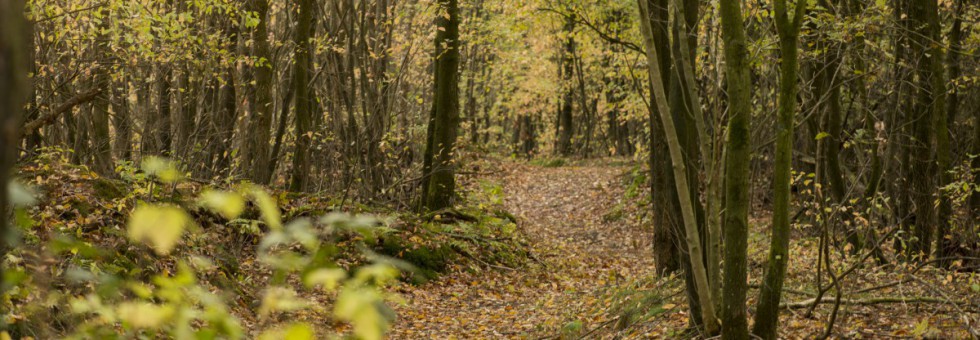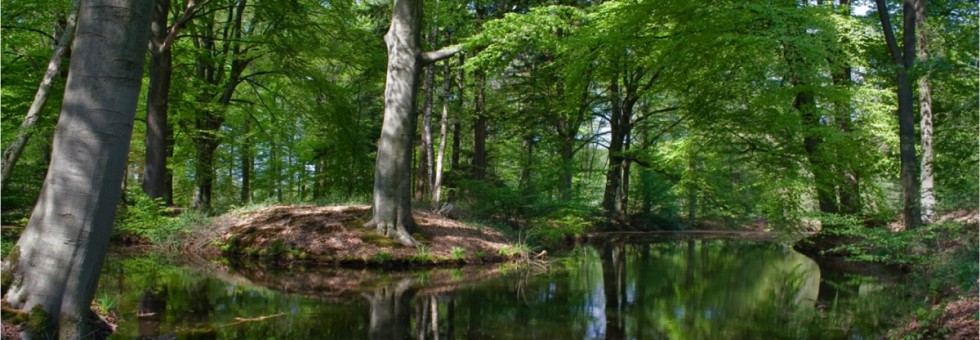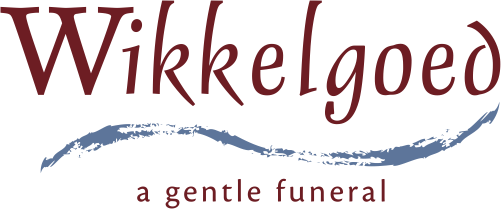No products in the cart.
Natural burial in the Netherlands
'Returning' one's body to nature is something mankind has always done. In viking culture, the deceased were put on a boat and left out to sea, a beautiful symbol for a society where life is so connected to the sea. On land, mankind buried their deceased in the earth, which we still do today. Many people, however, experience a cemetery as something unnaturally formal, which is why they start looking for alternatives. The problem here is that burial is not allowed outside of cemeteries (for more information on dutch legislation check out Rijksoverheid).
Yet there is an alternative to this traditional burial: natural burial. More and more Dutch people are buried in nature, for example in a forest. This choice for natural burial is often made when the person has the desire to be buried without a coffin. In this case, the combination of a funeral shroud and a carrier is used.

What is natural burial
A natural burial site is a nature reserve that is designated to also function as a burial site. Here there are no rows of tombstones and plants are allowed to grow freely. The areas vary from forests to grassplots or even cornfields, and are sometimes situated next to a lake. Contrary to a traditional burial site, the place of burial is not assigned. The desired place can be selected at will beforehand, only taking into account the appropriate space between graves.
When an area like this is designated for burial, the burial rights are often everlasting. One of the functions of this is that the nature in this area is not to be harmed for the duration of this contract. This means that a natural resting place attributes directly to the conservation and protection of nature.
For this reason, tombstones and inorganic grave markings are not allowed. The same goes for the placement of flowers by the grave after a period of two weeks. Usually it is allowed to mark the grave with a small stone or a tree slice with an inscription.
The exact place of burial is established with the help of GPS-coordinates. This way, the grave can always be found, even when it has been completely overgrown. Burial site staff will always be there to help.
Most natural burial sites also offer the possibility of burying an urn. When cremation has taken place, the urn can be buried in this nature reserve. Usually there are no designated locations for ash scattering, due to the impact of this on the vegetation.
A natural grave is appropriate for one person, but it is possible to reserve to places close to each other. It can be wise to reserve in advance, to prevent the spaces next to a loved one from becoming occupied. The ground is only opened ones in order to minimise the impact on the reserve.
At the moment there are 16 natural burial sites in the Netherlands, and the amount is still growing. The demand increases as more people come to know of this alternative form of burial. The popularity of the dutch word for natural burial site in Google Trends supports this:
Why do people choose a natural burial?
One's wish to be buried in nature often also brings the surrounding loved ones consolation. A burial site in nature is always accessible, and it is not rare for such areas to be part of a much larger nature reserve. A visit to the grave becomes much less formal when it is combined with a walk or reading a book.
For many people, being in nature has a soothing effect. The natural burial site's whole landscape colors with the seasons. In winter it is serenely quiet, whereas in spring the area is full of lively birds. When functioning as a burial site, nature itself becomes a memorial place.

A grave in nature is accessible for everyone, no matter the faith or descent. The burial rights are often everlasting, and given that the grave merges into the vegetation, it requires no maintenance. Another reason to choose for a natural burial could be the price. Given the absence of gravestones, and the fact that the burial rights do not need to be prolonged, the total costs are often quite low in comparison.
Regulations
The conservation and development of nature are the key values of a natural burial site. Each site follows regulations in order to put as little pressure on nature as possible.
Coffins, carriers and urns are to be made from naturally decomposable. In searching for options, feel free to browse through our shrouds and carriers, which follow requirement. Always consult the burial site of your choice for its specific rules, especially when dealing with prostheses or a pacemaker.
The clothing of the body is preferably, and often obligated to be, naturally decomposable. This usually means that clothing must to be undyed, given of the chemical components in most types of paint. A solution to this could be the use of natural paint. Examples of non-synthetic fabrics are linen, cotton, silk, hemp and bamboo. Also take into account that most buttons, zippers and velcro are not naturally decomposable.
When a natural burial is chosen, and you are wondering whether a certain piece of clothing is suitable or not, have a look at its label to see what it is made of, and contact the natural burial site you have in mind. If there is no label in the fabric, you could consider calling its manufacturer, or show the materials to the burial site staff. The staff members who are to take care of such cases often have a wide knowledge of fabrics.
For the same reasons, large stone grave markings are not allowed. If the area would end up full of gravestones, the natural character of the burial site would be lost, ánd the vegetation would be harmed. This is why the sites offer diverse alternatives, such as a tree slice, small rock or plant. Sometimes, however, the graves remain unmarked. When it comes to placing flowers, the general rule is that this is only allowed for two weeks after burial.
The care for nature growing free does not forego the accessibility for visitors. There are always clear, and often partly paved, roads present. After all, a lack of paths would only call for more damaged vegetation in the long run. Most sites offer a form of transport for those not fit enough to walk.
Most natural burial sites are open from dawn till dusk. Some, however, are only open from 10:00 to 18:00 in order to have time for maintenance, and to be sure there is always someone present for safety reasons. Usually the opening hours are more limited in the weekends and holidays. The opening times differ for each site, so when you are planning to visit a natural burial site it is best to consult their website.
Criticism of natural burial
The amount of natural burials is growing, as is the critisim it receives. Some fear that the natural reserve would become inaccessible. Others see this selling of burial rights in nature as a revenue model that does not put the importance of nature first. Critics also question the environmental effects of this form of burial.
Research has been done, however, that shows that the impact on the environment is negligible. Even more, natural burial sites that have joined trade association Brana are obligated to be certified as nature manager. This trade association monitors the effects of natural burial, and maintains close contact with the government and other interest groups.

